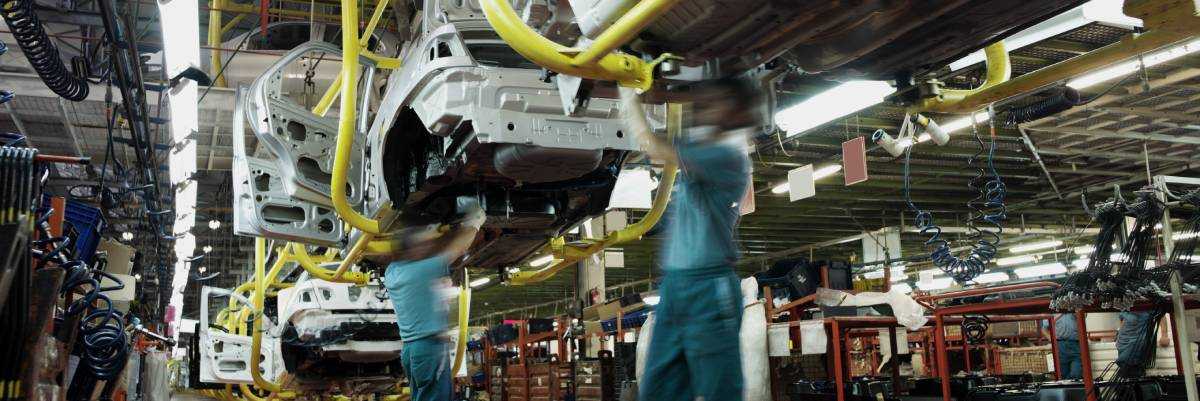The role of the people working on the frontlines of the Covid-19 pandemic has elevated these workers to the status of heroes. Not only do we recognize the uncertain health risks they have faced, we grasp their essential role in keeping things running. Their value has never been more appreciated. As recent actions have been taken to reevaluate the health and safety of these workers, for the manufacturing industries, now is also a good time to consider the capability of these workers not only to “keep things running” but also to pursue continuous improvement. A top-down, continuous-improvement strategy most organizations follow is missing the mark. To achieve Operational Excellence (OPEX), you need to invert the pyramid.
The key to driving continuous improvement and achieving OPEX starts on the floor – with your frontline workers.
For many frontline workers, the job is just that. They generally adhere to their job description of “running the machines.” While automation has replaced many frontline workers, the demands on those that remain grow heavier. Increasingly they are expected to absorb more technical information and decipher data to solve issues quicker.
Today’s problems can’t be solved using old-world tactics, and frontline workers are often simply not equipped to resolve the issues of the modern workplace. When a problem arises, falling back on the well-worn path as the default of standard fixes or escalating to maintenance and/or engineering is no longer enough.
Fortunately, the mentality that frontline workers should “just run the machine” is shifting. Company leaders expect workers to take a more active role in problem-solving, be more proactive in learning and skill development, and take responsibility for the organizational impacts resulting from operations on the floor. They are in the best position to notice problems first. Shouldn’t they also know how to solve a problem?
The closer one can get to the source of the problem, the better the chances are of resolving it quickly and inexpensively.
Unfortunately, noticing an issue isn’t enough. Workers need to be able to critically assess the problem or see it through to a resolution. If they can’t, chances are the issue will be escalated, take longer to solve and cost more than necessary in resources and lost productivity. The closer one can get to the source of the problem, the better the chances are of resolving it quickly and inexpensively.
As the first ones on the scene, your frontline workers can play a crucial role in increasing your product quality, preventing rejects, minimizing damages and halting deterioration of a situation before it causes potential calamity. Consider which of these problem statements shortens the distance between problem and solution:
Scenario #1
We had rejects last night. Please send an engineer to take a look.
Scenario #2
Our chief product has an issue. We noticed scratches across the panel on lines 1 and 3, but not on line 2. The issue began at 7 am and was first identified at the last workstation.
Scenario #2 takes a more critical look at the situation and moves the problem towards resolution. It’s important to equip critically placed frontline employees with the knowledge and structure they need to tackle problems analytically. To accomplish this, frontline training should be part of your continuous improvement program. Whether it’s to reduce safety incidents, increase production quality, teach problem-solving techniques or ensure consistency from team to team; training that is appropriate and relevant to the job will pay for itself during your OPEX journey.
Frontline training should be part of your continuous improvement program.
Fortunately, diverse approaches to training and learning styles make it possible to integrate training into the workday without taking workers off the line for long periods of time.
- Microlearning is bite-sized or easily digestible, focused learning that is accessed by the learner as needed. It’s particularly effective when learners don’t have the time or attention span for formal training. Procedures and work guides are segmented by topic, and easily accessible on a computer or mobile device. Short, memorable how-to videos are viewed for quick reference.
- Learning by doing focuses on skills that are relevant to workers and then having them practice what they’ve learned. Teaching minimum, work-related concepts and providing ample time to practice in a safe work setting, or a risk-free environment using simulation devices and gamification can make learning-by-doing fun and memorable while easing the transition of new skills into practice.
- Coaching to build high performers is an effective way to establish clear expectations and set the stage for success. Coaches observe performance on the floor and provide individualized, pinpointed feedback. For example, they watch for workers doing something right, ask them to explain why they are doing it this way, provide encouragement and build confidence.
Bringing the frontline into continuous initiatives not only profits from their understanding of the equipment they run but also requires giving them the skills needed to be actively involved in resolving issues and pursuing improvements. If that top-down pyramid is inverted, and frontline workers are fully integrated in CI initiatives, your OPEX journey stands a greater chance of being acted on every day.
About Kepner-Tregoe
Software and templates don’t solve problems. People solve problems!
What kind of people? People who are curious, ask great questions, make decisions based on facts, and are empowered to lead. They remain focused under pressure and act confidently to do what needs to be done. You’ll find these problem solving leaders both at our clients and here at Kepner-Tregoe. For over 60 years, Kepner-Tregoe has empowered thousands of companies to solve millions of problems. If we can save millions for a manufacturer, restore IT service for a stock exchange, and help Apollo 13 get back from space, we can help your business achieve success.









